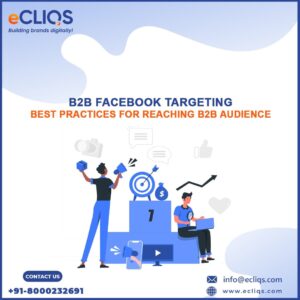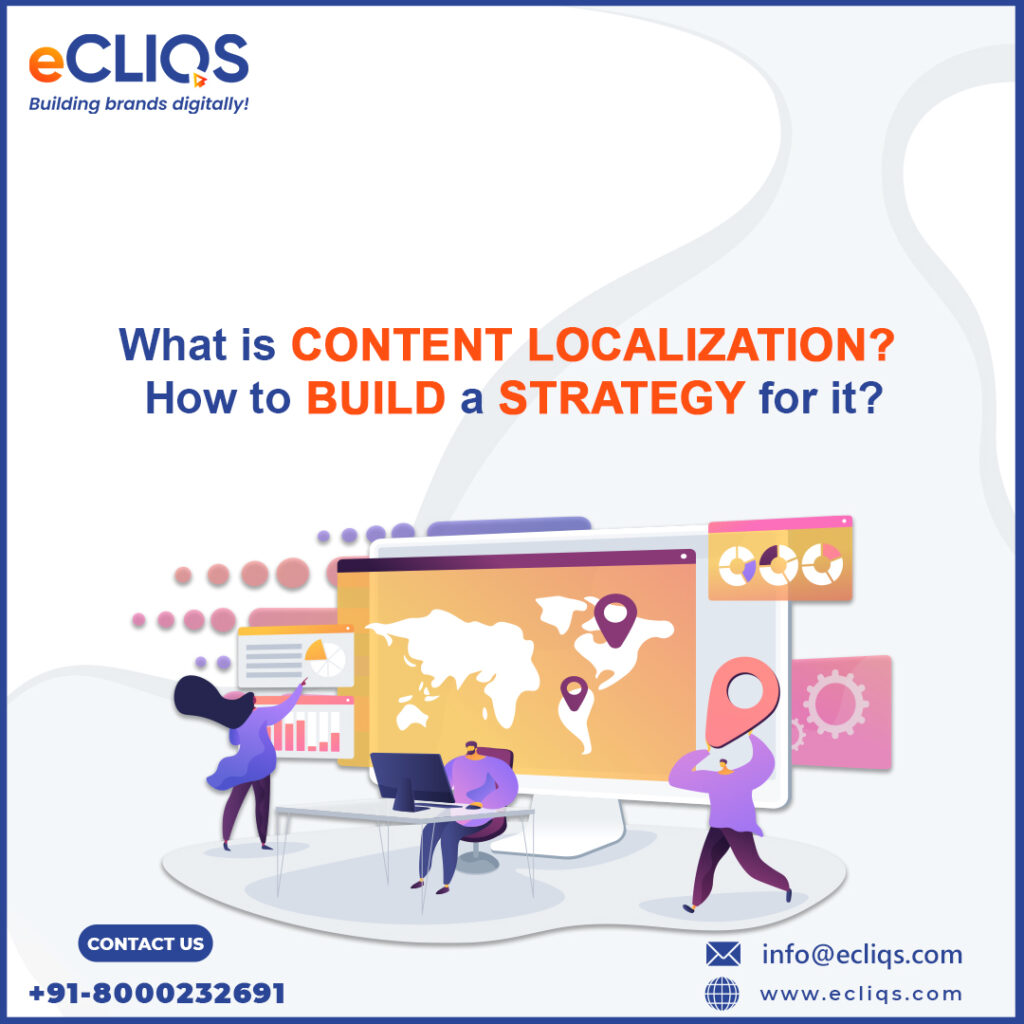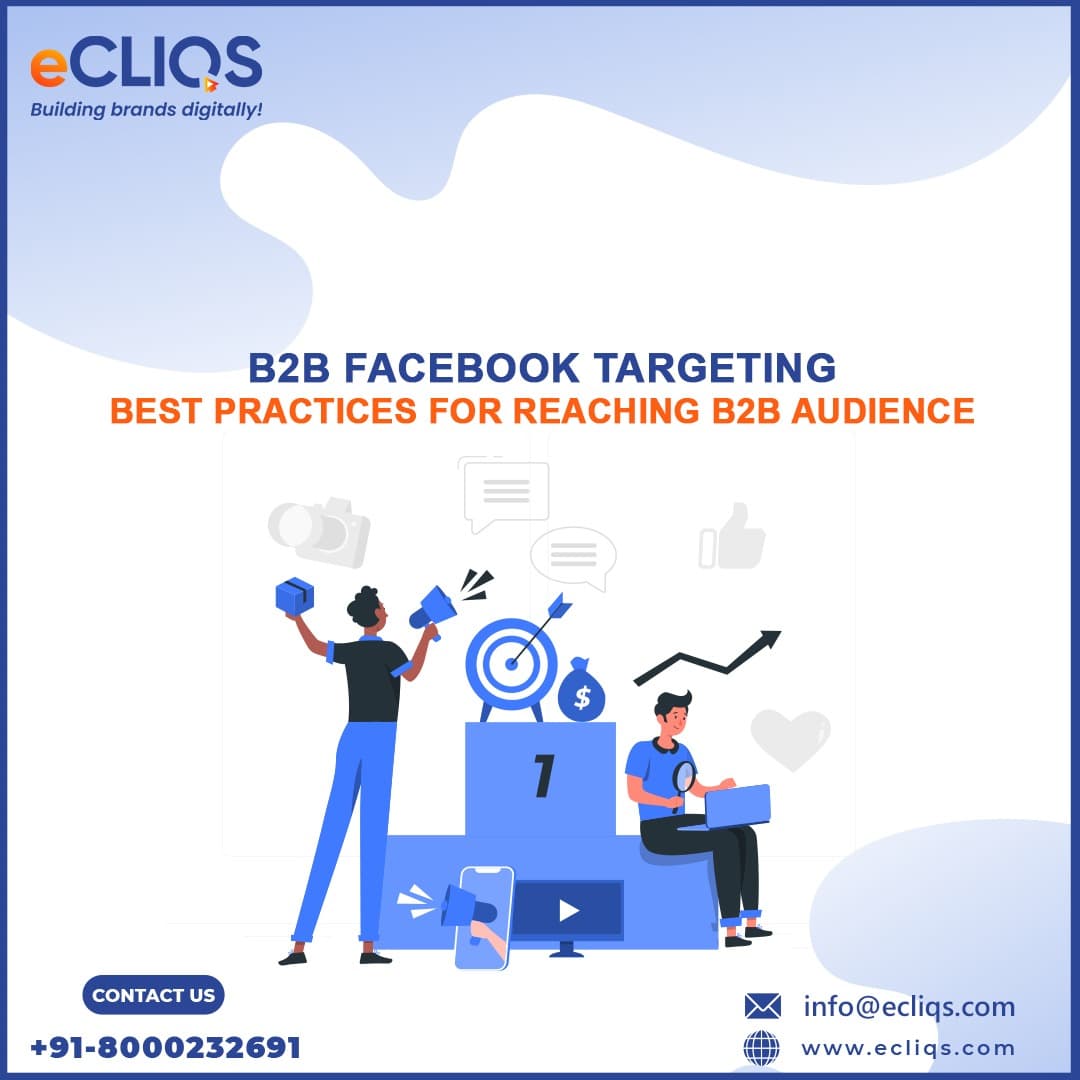B2B Facebook Targeting: Best Practices for Reaching Your B2B Audience
When you think about business-to-business (B2B) advertising on social media, your first thinking probably goes to LinkedIn — and that’s not wrong! Not necessarily. While LinkedIn is often regarded as the pinnacle of B2B advertising and targeting, there is another social media that can assist you in reaching out to your professional audience.
B2B Facebook targeting and advertising is a largely underestimated opportunity for businesses, and we’re here to clear the air regarding the benefits Facebook’s B2B targeting and ads can provide by sharing some best practices for effectively reaching your B2B audience.

Why use B2B Facebook targeting?
With nearly 3 billion active users and a median cost per click that is substantially lower than LinkedIn, Facebook is practically a goldmine of opportunity for B2B targeted advertising, and we’ve got the tips you need to capitalize on it.
Types of B2B Audiences
Facebook’s B2B targeting possibilities may not be as niche-specific as LinkedIn’s, but there are still valuable audiences to approach. Read on to learn about the two main B2B Facebook targeting choices available today.
1. Facebook lookalike audiences:
Facebook’s B2B Lookalike audiences are an excellent approach to reaching new people who share similar traits with your current audience. In turn, they may be interested in your business.
Lookalike audiences are generated from existing Custom Audiences that you provide as a source audience. Facebook uses data from your source audience, such as demographics and behaviors, to discover other individuals who have similar characteristics, or “look like” them.
Once you’ve created your Lookalike audience, you can choose a percentage range for how closely it should resemble your source audience. The lower your proportion, the more closely it will resemble your source audience. On the other hand, the higher the percentage, the wider your audience will be.
2. Facebook B2B enterprise employees:
Instead of using Facebook’s company and job title targeting, try Facebook’s B2B Enterprise Employee targeting. Enterprise Employee categories, found in “Detailed Targeting” under “More Categories,” target employees from small, medium, and big B2B businesses. Specific targeting for Facebook’s B2B Enterprise Employee targeting options are as follows:
- – Small B2B enterprise employees (10–200 employees)
- – Medium B2B enterprise employees (200–500 employees)
- – Large B2B enterprise employees (500+ employees)
Facebook B2B Enterprise Employee Audience Targeting is an excellent way to reach more relevant audiences for your ads.
Best B2B Facebook targeting practices
Read on for some tried-and-true B2B Facebook targeting best practices to help you succeed with your next campaign.
- First-Party Data: First-party data is your buddy! First-party customer data provides essential insights into your target audience, particularly high-value audience members who are more likely to convert. Use your first-party customer data to assist narrow your B2B Facebook targeting efforts, ensuring you’re targeting the most profitable groups.
- Use of exclusion tools: Just like you would filter out inaccurate or obsolete client data in your customer relationship management (CRM) system, you may filter out B2B audiences on Facebook that you do not want to target with your advertising. Facebook’s audience exclusion tools for campaigns are an excellent approach to ensure that your B2B Facebook ads are seen by the intended recipients. Better yet, you reduce the risk of investing resources in a B2B ad campaign on Facebook that isn’t being seen by those who will engage with it.
- Create ICPs: Ideal customer profiles (ICPs) are extremely useful tools for B2B organizations who want to reach their target demographic. An ICP is a hypothetical corporation that embodies all of the features and characteristics of individuals who would benefit most from a B2B company’s products or services. In essence, ICPs assist B2B businesses in better understanding who they are marketing to.
More crucially, ICPs help B2B enterprises to target their marketing efforts. This includes B2B Facebook targeting. With an ICP, you can learn about your target audience’s interests, behaviors, preferences, and everything else. Using this information, you can use B2B Facebook targeting choices with confidence, knowing you’re hitting your intended audience.
B2B campaigns on Facebook can be as effective as LinkedIn in terms of reaching your target audience. e-Cliqs has the pleasure of working on more than 200+ Projects including B2B clients as well
Contact us today to speak with our digital marketing expert to learn more about how e-Cliqs can help you boost your business.
What Is Content Localization? How To Build a Strategy for it?
Did you know that only about 25% of the world’s population can speak and read English? This means there are many untouched markets around the world. Localization is the process of adjusting your brand’s content (such as websites or apps) for a foreign audience. Localization begins with language translation, but it does not end there. When it comes to expanding your brand into international markets, a content localization strategy is essential.
When Coca-Cola launched in China, they quickly realized the name didn’t quite have the same catchy ring to it. In Chinese, the phrase directly translates to “bite the wax tadpole”. This led to a country-specific rebrand. The world-famous drink is now known as Kekoukele in China, which has a much more palatable translation – “tasty fun”. But it’s not just brand names that don’t translate well into other languages. This is where content localization comes in.

What is content localization?
Content localization is the process of adapting your existing content for a specific new market. When you localize material, it must be translated for your new audience. It should be tailored to be culturally suitable and understandable to them. A word-for-word translation is insufficient due to differences in idioms, cultural sensitivities, naming practices, formatting, and linguistic nuances. To truly establish brand loyalty, focus your marketing efforts on your new international audiences and their individual needs.
Why is content localization needed for Global Growth?
There are numerous reasons why content localization is critical to your business’s growth. Nonetheless, they all come from the same premise: consumers who feel connected spend more. Customers want to feel connected to brands. When they do, 57% boost their expenditure and 76% choose to buy from them rather than a competition. The difficult thing is making a connection in the first place. A fantastic approach to accomplish this is to create localized content that is tailored to the interests and demands of each target market.
With this form of content, you demonstrate a genuine interest in who they are and what they want. Your customers will feel understood, and valued, and that you “get” them.
Creating customized content for your target market has numerous benefits for a global brand:
- It helps you enter new markets and establish your brand better.
- It makes you more relatable to your audience, improves engagement, and builds brand loyalty over time.
- It ultimately improves your conversions, which in turn enhances your sales and revenue.
Steps to Build Effective Content Localization Strategy
- Research target market: The customer is always right – or, at least, they are always right about what they want and need. Brands that believe they know what varied markets want are on the path to disaster. Assumptions are especially harmful when expanding into new cultures and destinations with drastically different interests and lifestyles. You must perform market research to better understand your target consumer. Begin by determining whether the markets you intend to target are a suitable fit: do they need or want what you’re selling? Most importantly, can they afford what you’re selling? Then, analyze who your primary competitors are in your target location. You’ll get an overview of what works, what doesn’t, and who dominates the space.
- Understand what content to localize: Sometimes it doesn’t make sense to translate and localize all of your content for new audiences.
Running a content audit and finding your best-performing items is a smart place to begin. It’s not that you shouldn’t translate all of your content but focus on your highest conversion pages. These can include high-conversion homepages and landing pages.
- Consider your wording: Now that the translation is complete, it is more crucial than ever to increase content localization by using words that are relevant to your target market. Even countries that speak the same language use words differently. For example, British people prefer the use of ‘colour’ and Americans use ‘colors’. It might not seem much but if a British person visits your website and sees you regularly referring to ‘colors’ he might feel like you are not talking to him. A word-for-word content translation requires some adjusting to ensure you’re communicating to local audiences, and glossaries come in handy. To speed up the content localization process, you can create rules like ‘always translate: colours to colors.
- Show up in local search engines: Visitors to different destinations employ different versions to achieve the same search objective. This holds for the search terms they’ll employ to find your items or services. Localized content allows you to target the specific keywords used in distinct markets, allowing you to dominate search results for that destination. Let’s take an example of sneakers vs trainers. If your content isn’t localized, and you consistently refer to “sneakers”, British visitors may never come across your site simply because they are typing “trainers” on search engines. That is why it is critical to align your translated website with the search intent of your target audience. Even if they speak the same language, regional variances will influence their search phrases.
- Personalized shopping experience: When it comes to localization efforts, there are a few additional factors to consider for individuals who own an e-commerce site. A huge majority of customers remain skeptical of internet payments. Handing over money into the ether is a daunting prospect, so we tend to stick with more traditional payment methods.
The issue is that preferred payment methods differ depending on your client’s location. A shopper in Brazil may decide to pay with Boleto Bancario. But if they don’t see that option, they’ll gladly go with whoever does. An Indian prefers to pay with UPI, credit cards, or cash on delivery but if they don’t find that option, they are more likely to not go through with your products or services.
Conclusion: Exploring new international markets is intriguing. You are no longer constrained by borders and can swiftly convert entire populations into potential buyers.
However, the trick is to get it properly. Localization is more than merely translating the text on your website. It is about providing each user with a personalized local experience. Start with these website localization best practices to determine who your new audiences are and what they want from you. Only then can you build smooth and entertaining experiences for consumers wherever they are in the world.
References:
- https://phrase.com/blog/posts/content-localization/
- https://localizejs.com/articles/creating-a-content-localization-strategy/
- https://rockcontent.com/blog/content-localization/
- https://www.contentbloom.com/blog/content-localization-a-strategy-for-building-global-engagement/
- https://www.acclaro.com/blog/how-to-create-an-effective-content-localization-strategy/




